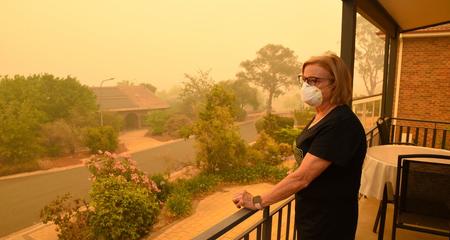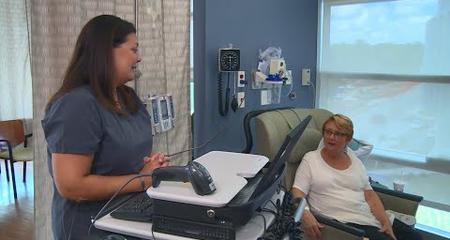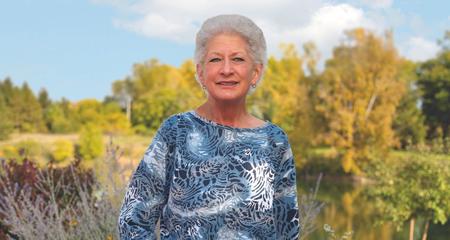Our interventional pulmonology team focuses on bringing patients with pulmonary or thoracic disease the latest in advanced, minimally invasive therapeutic and diagnostic techniques to evaluate and treat their condition.
Working as part of a multidisciplinary team, and with access to the latest technology, we are able to offer patients an individualized treatment plan designed for their specific condition.
Interventional Pulmonology Treatments
- Airway stenting — Stents are small, cylindrical, expandable tubes, very similar to those used by cardiologists to open arteries in the heart. Interventional pulmonologists use stents to open breathing tubes that are narrowed by infection, tumors or scar tissue.
- Argon plasma coagulation (APC) — With this noncontact method, a catheter system delivers ionized argon gas into airways to destroy tumors or other lesions and prevent bleeding. As this treatment covers a large surface area, the procedure time is decreased.
- Balloon dilation — Using a bronchoscope, a small balloon is placed into a narrowed airway to open it up wider. Airway narrowing can lead to many different symptoms, including shortness of breath, poor exercise ability, voice change or coughing.
- Bronchial thermoplasty (BT) — Bronchial thermoplasty is an FDA-approved, nonpharmacological treatment for patients who suffer from severe, persistent asthma that is poorly controlled with inhaled corticosteroids and long-acting beta agonists, which are the current standard-of-care treatments. Bronchial thermoplasty uses radiofrequency energy to relieve asthma symptoms by heating the smooth muscle walls of the airway. This technique results in fewer asthma symptoms and greater relief.
- Bronchoscopic lung volume reduction (BLVR) — BLVR is a minimally invasive treatment option that has been shown to greatly improve quality of life for patients with emphysema and hyperinflation, or extra air in their lungs. A one-way endobronchial valve is placed into one or more lobes of the lung to allow the targeted lobe(s) to slowly deflate over time, improving quality of life and exercise capacity. It represents a safe and effective treatment for patients with severe emphysema. Learn more about BLVR.
- Cryosurgery and spray cryotherapy — Using either a rigid or flexible bronchoscope, cryotherapy destroys airway lesions by freezing tissue. In cryosurgery, a probe tip is rapidly cooled by nitrous oxide or carbon dioxide and applied directly to the lesion to remove it. Spray cryotherapy uses liquid nitrogen to spray an area of concern and cause cryonecrosis, or tissue death by rapid freezing. These procedures are used together with others to open a blocked airway.
- Electromagnetic navigation bronchoscopy (ENB) — Our interventional pulmonology team uses both the superDimension™ and ILLUMISITE™ electromagnetic navigation systems to gain access to peripheral lung lesions and mediastinal lymph nodes for patients who are unable to undergo more invasive procedures, who may have multiple lesions, or who need a formal diagnosis before a more invasive surgery. These image-guided techniques use a virtual airway system to pinpoint and target lesions to facilitate thorough, more accurate biopsies.
- Endobronchial valves for persistent air leak — The Spiration® endobronchial valve device has been approved by the U.S. Food and Drug Administration (FDA) for humanitarian use to control prolonged air leaks of the lung after lobectomy, segmentectomy or lung volume reduction surgery. This FDA Humanitarian Device Exemption is the first for a bronchial valve procedure. Our team is one of a few using this innovative treatment approach for persistent air leak.
- Fiducial marker placement for stereotactic radiation — Some tumors are not accessible or manageable with traditional surgical approaches. These types of lesions are excellent candidates for stereotactic radiosurgery in which radiation therapy is delivered precisely to the tumor, enabling patients to receive needed care. Placement of fiducial markers (tiny metal clips) around the tumor allows for more precise delivery of radiation therapy to prevent damage to surrounding healthy lung tissue.
- Photodynamic therapy (PDT) — PDT represents a treatment for patients with endobronchial tumors, or tumors that are growing into the airway. This therapy uses a photosensitizer or photosensitizing agent that is injected intravenously and taken up preferentially by tumor cells. When tumor cells containing the drug are exposed to a specific wavelength of light, the cells produce an active form of oxygen that destroys nearby cancer cells.
- Rigid bronchoscopy — Using a solid, metal tube with a camera and light source, rigid bronchoscopy allows for direct visualization of the airway for a variety of diagnostic and therapeutic techniques. These options include removal of foreign objects inhaled into the airway and airway recannulization, which opens breathing tubes blocked by tumor, infection or scar tissue.
- Tunneled pleural catheter — When pleural fluid accumulates persistently in the pleural space, lung tissue can be compressed, making patients feel short of breath, able to do fewer activities, and develop a cough. Placing a tunneled pleural catheter under the skin in the side of the chest wall and into this space allows the fluid to drain, leading to improved quality of life for patients.
Diagnostic Procedures
Our interventional pulmonology team has access to the latest in diagnostic tools to ensure accurate diagnosis, to help guide the most appropriate treatment. Options include:
- Electromagnetic navigation bronchoscopy (EMN) — Our interventional pulmonology team uses the superDimension™ and ILLUMITE electromagnetic navigation systems to gain access to peripheral lung lesions and mediastinal lymph nodes for patients who are unable to undergo more invasive procedures, who may have multiple lesions, or who need a formal diagnosis before a more invasive surgery. These image-guided techniques use a virtual airway system to pinpoint and target lesions to facilitate accurate biopsies.
- Endobronchial ultrasound (EBUS) and radial probe endobronchial ultrasound (REBUS) — With EBUS, an interventional pulmonologist uses a bronchoscope equipped with ultrasound technology. This technique allows biopsies to be performed in multiple areas with much greater accuracy. Because the needle can be visualized within the abnormality of interest, the risk of puncturing a blood vessel or damaging lung tissue is minimized. This procedure also is used to biopsy lymph nodes (tissue swellings) in the middle of the chest (EBUS) or peripheral lung lesions (REBUS).
- Flexible bronchoscopy — We use flexible bronchoscopy to inspect a patient's airway. It can also be used to perform washings or biopsies (extraction of small pieces of tissue) of the airway tissue to look for infection, inflammation or cancer.
- Medical thoracoscopy — When laparoscopy is performed in the chest it is called medical thoracoscopy or pleuroscopy. During the procedure, a small instrument with a camera is inserted into the chest cavity through a very small incision, enabling the physician to perform diagnostic and therapeutic procedures inside the chest, including pleural biopsies for diagnostic purposes, placement of chest tubes to allow for fluid to be removed over time, and pleurodesis, or fusion of the two pleural layers, to prevent fluid or air from building up again.
- Transbronchial cryobiopsy — Interstitial lung disease (ILD) represents a rare group of lung problems caused when the supporting structure of the lung tissue, or interstitium, is abnormal for various reasons. Using a flexible bronchoscope and cryoprobe, tissue at the edge of the lung is biopsied to determine the underlying cause of the ILD and to help guide treatment. This procedure is beneficial for a patient who is unable to undergo surgery or would prefer a noninvasive approach before undergoing a surgical lung biopsy.
Research and Clinical Trials
As part of eastern Wisconsin’s only academic health network, our interventional pulmonologists are active in research, helping to improve patient care and identify innovative approaches to preventing, detecting, or treating pulmonary diseases and conditions. This research often provides patients access to clinical trials that can offer treatments that are not widely available. Learn more about current pulmonary clinical trials and research studies.
Interventional Pulmonology Team
Our interventional pulmonologists are part of a multidisciplinary team that includes surgeons, nurses, physician assistants, cardiovascular technicians, dietitians, therapists, lab technologists and other professionals. Together, our goal is to offer you personalized, minimally invasive and expeditious care.
Virtual Visits Are Available
Safe and convenient virtual visits by video let you get the care you need via a mobile device, tablet or computer wherever you are. We'll assess your condition and develop a treatment plan right away. To schedule a virtual visit, call 414-777-7700.
Recognized as High Performing by U.S. News & World Report
Froedtert Hospital is recognized by U.S. News & World Report as high performing in pulmonology and lung surgery, lung cancer surgery, chronic obstructive pulmonary disease (COPD) and pneumonia care. Froedtert Menomonee Falls Hospital is also recognized as high performing for COPD.
Blogs, Patient Stories, Videos and Classes








